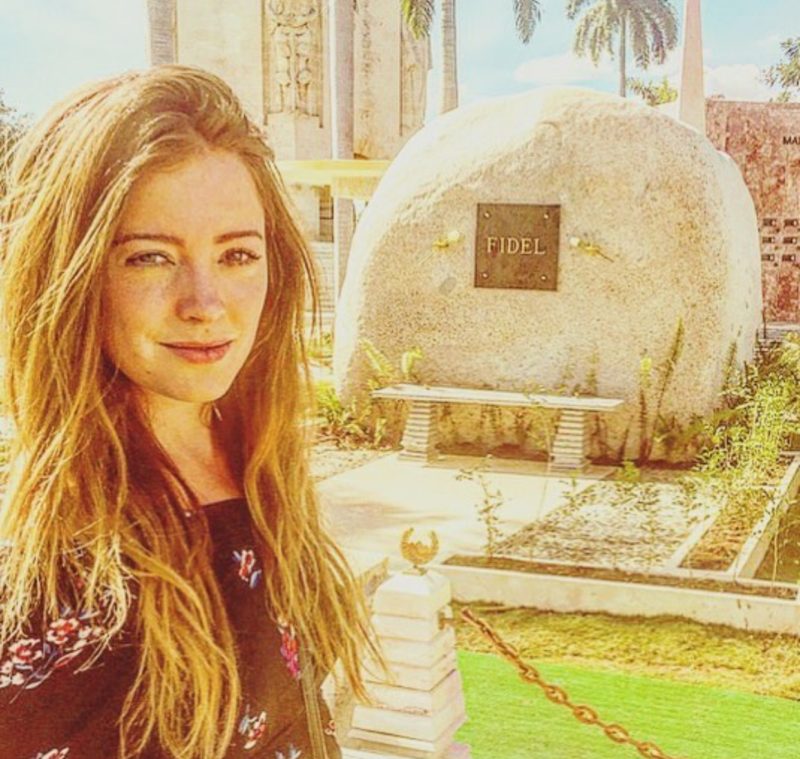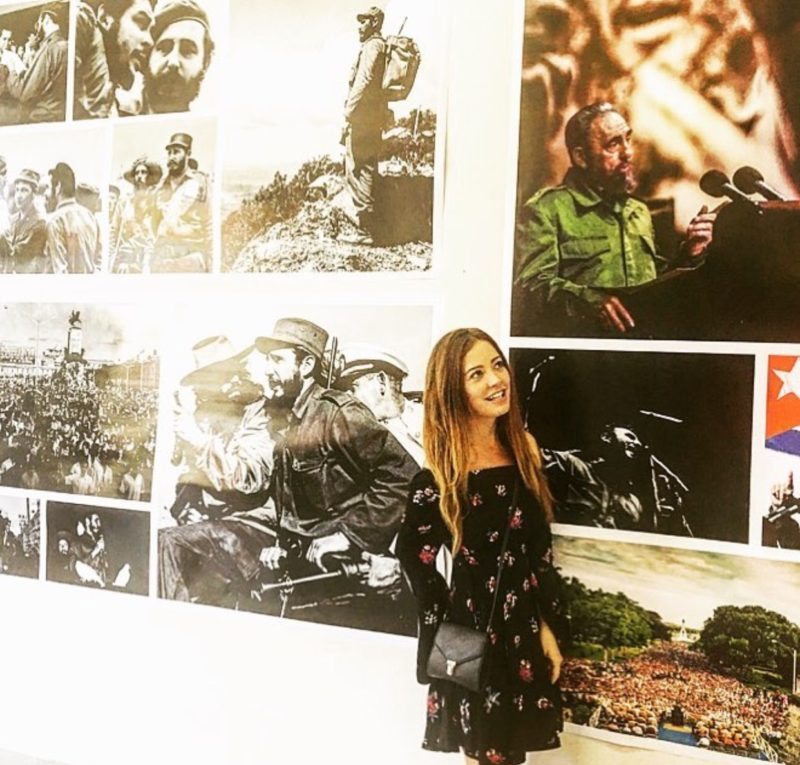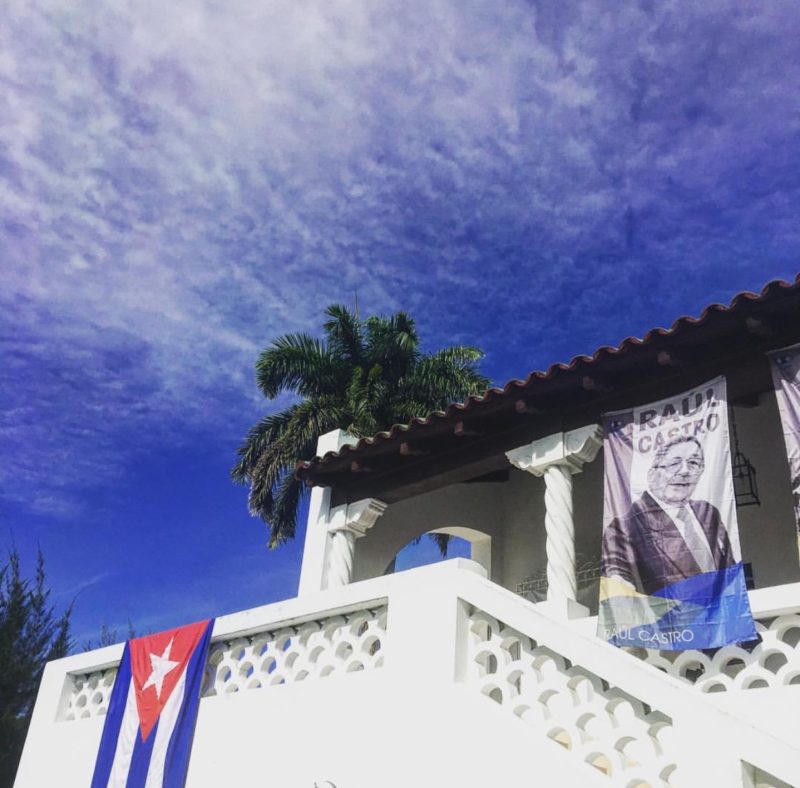My Journey through Cuba
WHERE WE STAND
Over the past few years, questions about accessibility for Americans to travel to Cuba has ebbed and flowed through media headlines. These questions have since surfaced again as President Trump declared on June 18th 2017–to a small, elite audience in Little Havana—that he would be, “canceling the last administration’s completely one-sided deal with Cuba.”
And this has led American travelers to ask: What does this mean? How do I legally travel to Cuba? What am I allowed to do in Cuba?
The history between the United States and Cuba governments has been turbulent, at times hostile and often confusing. Though it’s important to note that this is exclusively at a governmental level and not reflective of Cuban and American interactions.
Kasara E. Davidson, founder of the consulting company Diaspora Travel & Trade, has been traveling to Cuba for the past decade. She has also been developing programs and projects in and about Cuba for organizations, groups, and individuals for the past three years.
Davidson provides comprehensive insight into the history of US and Cuban government relations:
“ On October 19, 1960, the US Government placed an embargo (prohibition) on all exports to Cuba, except for food and medicine. Since then, the US Embargo Against Cuba, known in Cuba as el bloqueo (“the blockade”), has grown to consist of a number of Federal statutes and associated regulations that form a commercial, economic, and financial embargo against Cuba.
The Embargo is comprehensive, detailing all prohibited activity – almost all direct or in direct financial activity by any persons or entities subject to US Jurisdiction that involves the Cuban Government, Cuban property, or Cuban nationals – and any exceptions to these restrictions. Additionally, they are written so that the Executive Branch has the discretion to broaden or narrow certain areas.
The Embargo prohibits transactions related to and necessary for travel (purchasing flights, accommodations, food, etc.), whether paid for by the person subject to US Jurisdiction, one subject to a third party country, or for free. Those whose travel activities qualify for a “general license” or “specific license” as they are defined by the laws relevant to their travel dates, are exempted from these particular financial prohibitions. Over the years, various Administrations have changed the elements required to obtain and comply with general and specific license procedures.
On December 17, 2014, US President Barack Obama and Cuban President Raúl Castro announced their respective country’s intentions to reestablish diplomatic relations in an effort to begin to normalize relations between the neighboring nations. During the remainder of his term, President Obama and his Administration continued to use the Executive Power to “loosen” the restrictive nature of the Embargo….”
However, President Trump’s announcement in mid June aims to once again tighten any reigns that President Obama had loosened. As stated in the Washington Post article, “Five things you need to know about Trump’s Cuba policy — and who it will hurt,” author Martina Kunović explains that while tour operators and US based cruises will still be able to travel to Cuba, the “people-to-people” travel category, one of the 12 categories of authorized Cuba travel Under Obama, will be more restricted.
The “people to people” category has been loosely enforced since the Obama administration and based on an honor system. As Kunović writes,”…ordinary Americans could plan their own itineraries, as long as they would engage in ‘meaningful interaction’ with Cubans in ways that ‘enhance contact with the Cuban people, support civil society in Cuba, or promote the Cuban people’s independence from Cuban authorities. Once again, Americans must travel through a licensed tour company under U.S. jurisdiction and be accompanied by a company representative. Cuban Americans and others who fit the more narrow categories will still be allowed to travel on their own.”

MY JOURNEY
Throughout the years, the lessons I had in history classes about the United States’ neighbor, a meager 90 miles from the coast of Florida, were never able to suffice or satiate my curiosity. All I really knew was bright vintage cars and pastel houses.
So, when I had the opportunity to visit Cuba myself when the embargo lifted, I quite literally jumped on the opportunity…and on a plane. The history lessons were nothing compared to the conversations (often over some rum and a cigar in a hole-in-the-wall Havana bar), the questions I asked and the answers I received when circumnavigating the country on a Celestyal Cruise. The first stop on the cruise was Santiago de Cuba, just days following the death of Fidel Castro, notorious President of Cuba from 1975-2008.
A Tale of Two Gravestones: Santiago de Cuba Post Fidel’s Death
I began my journey where an era ended.
As I was standing in The Santa Ifigenia Cemetery in Santiago de Cuba just days following the death of the country’s former leader, Fidel Castro, it was difficult to comprehend Cuba’s dynamic past and present.
A grandiose marble mausoleum commemorating the life of Jose Marti, a 19th Century poet, philosopher and revolutionary, penetrates the cemetery skyline. It begs for your attention, with its intricate detailing and columns of robust male statues, guarding the tomb.
A chill ran down my spine.
And 40 yards away sits what looks like a glorified boulder. Only, it is Fidel Castro’s tombstone. In true minimalist fashion, it is a pained rock, bare, with the exception of it’s “Fidel” plaque. Nondescript.
The stark dichotomy in contrast could and would not be ignored. If you weren’t looking for the grave specifically, chances are you would miss it entirely. But everything—the location, the minimalism—it was intentional.
“Fidel wants to be perceived as someone who continued Martí’s work, although he knows exactly that Marti was a 19th-century Republican democrat who had nothing to do with Marxist-Leninist superstitions,” said exiled Cuban author Carlos Alberto Montaner. “To place his tomb next to Martí’s is an attempt to perpetuate a historical fraud.”
And for a leader who propagated, propelled and perpetuated beliefs that minimalism is key, his grave certainly gives off that “less is more” ideology. an ideology that prompted a mix of celebration and grief at the death of the leader of the revolution.
While it was the beginning of my journey circumnavigating the island with on Celestyal Cruises, I stood mere feet away from an end. And now it was time to walk backwards, to understand Fidel’s Cuba. My journey began in Santiago de Cuba.
Santiago
Capital of Cuba’s southeastern Santiago de Cuba province, played an instrumental role in the poignant, divisive narrative of the country’s multifaceted revolution. It was here that Fidel Castro was educated. It was here where he began to proselytize his controversial ideas on patriotism and politics. And, most significantly, it was here where he and his small, fervent group of rebels began their mission in overthrowing the dictatorship of Fulgencio Batista, whom they perceived as an illegitimate leader.
Claiming to have recruited and trained 1200 like-minded men in a matter of only a few months, Castro initiated the revolution when he and about 137 rebels attacked Batista’s military in Santiago’s Moncada barracks on July 26, 1953, just a little over a year after Batista’s rise to power in March 1952.
Located closer to Haiti and the Dominican Republic than it is to Havana, Santiago’s personality reflects influences from both the east and the west, which, when mixed with its proud Afro-Cuban heritage, makes for a cosmopolitan mosaic of a city.
Despite this rather bloody, belligerent past, Santiago de Cuba could not be more full of life. In fact, it is well known as the birthplace to many of Cuba’s most famous artists and artisans, such as musicians Compay Segundo, Ibraim Ferrer, Eliades Ochoa (all participants of the Buena Vista Social Club), the founder of the world-famous Bacardi brand, Facuno Bacardi Masso, and poet Jose Maria Heredia.
While it bodes similarities to many of the world’s urban centers, Santiago stands out because of its time-worn charm, hosting all the activities of a thriving central city amidst a setting of nostalgic architecture. Just envision a convoy of modern vehicles veering on cobblestone streets more apt for a horse-drawn carriage.
This fusion of old-world aesthetic and contemporary cacophony is as beautiful as it is symbolic: all around, remnants of Cuba’s past serve as a reminder to how far the country has come since Castro’s vision was realized, while glimpses of modernity act as beacons to how much it changes, however steady.
Although his first attempt was unsuccessful, Castro went on to fight for his vision of Cuba for several years — until January 1, 1959 — when he proclaimed the victory of the Cuban Revolution from a balcony on Santiago de Cuba’s city hall, marking the city as the bookends of the nation’s civil war. Which makes Santiago dually a pivotal and eye-opening stop on any inquisitive traveler’s Cuba itinerary.
And that is precisely what my people-to-people license and itinerary allowed me to do – to explore, to ask, to see Cuba mere days after a pivotal day in their history.

Every opportunity I had to engage with Cubans and fuel my curiosity, believe me. I would. At The African American Cultural Center in Santiago — a core to the evolution of Cuban architecture, literature and music – I had the opportunity to discuss what Castro’s passing means, if anything, for the people of Santiago.
And what I found throughout my time in Santiago, home of the revolution, was a mix of confusion as to what is to come. Along with a hope. A hope that elements of the Afro-Cuban past, historical and culturally tied to Western African, will continue to be passed on for generations to come, regardless of the governmental figurehead.
Perhaps Dr. Chavez* articulated it best:
“Our [African] feet have been dancing on this island for years and years. We have danced through happiness and we have danced through sorrow. And we don’t intend on stopping our dance any time soon.”
Speaking of dancing, this pastiche of numerous cultures within the city leaves no mystery as to why Santiago has become a place from which many traditional dances have originated. Most notable of these dances is son, from which salsa is derived, while guaguanco, a form of dance that uses percussion music exclusively, follows second in popularity. The city is also known for its vivacious Carnival, during which the streets come alive with conga music, dancing, and crowds whose collective attire seemingly represents every shade on the color spectrum.
Fidel Castro transferred leadership in 2006, and assigned it to his brother Raul. Since this transfer of power, the country shows signs of increasing liberalism, albeit slow paced. For instance, in 2011, Raul Castro approved a number of economic reforms that granted Cubans such as the ability to open small businesses, even encouraging the accrual of investors from foreign countries.
Today a piece of stone bearing the name of a leader—notorious to some, a hero to others—is what remains of a tumultuous chapter in Cuba’s history book. And yet, another page is about to open (or close, depending on how you will perceive it), as the President of the United States has declared he will tighten the reigns on America’s relationship with Cuba. How will this affect travel to Cuba for Americans? How will it affect the Cuban economy? How will Cubans react and how will these reactions bode for potential progress down the road? The questions spiral and we are left in a state of waiting.
Will only time tell? Stay tuned for more on this Cuban journey.

